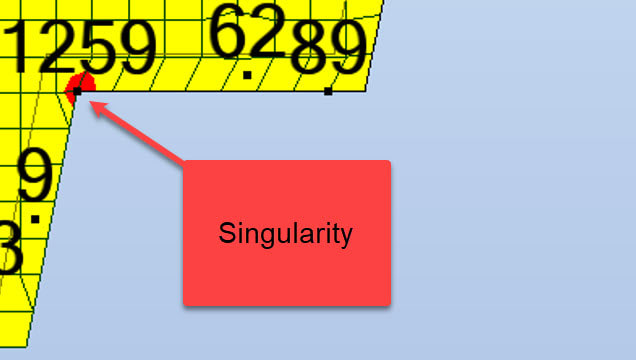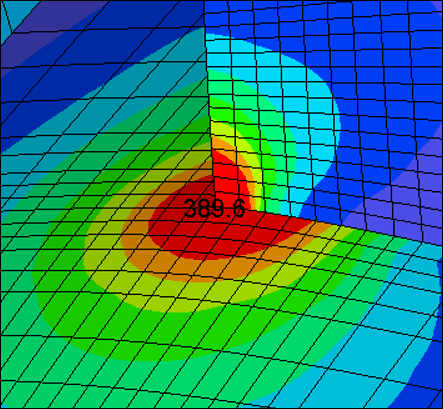First let us consider singularity in mathematics. The singularity of mathematical function is point at which the function's value can not be defined or in other words value approaches infinity. Take f(x) = 1/x. The value of f(x) at x=0 is infinity or cannot be defined and the function is called singular at x=0. Similarly, now consider the values of stress at point. (Its different from stress at point to find out stress tensor components.) As the area approaches zero (consider point as nearly zero area) stress values tend to infinity. At the sharp corner, the resistance to the stress is concentrated at a corner point and hence the stress values are higher than adjoining area.
In reality, we cannot make perfect corner or anything that is perfectly round, square, flat etc. Some finite radius will always be present at corner and finite area resist the stresses at corner and hence the stress will be finite in real structures. Discretization/meshing introduces singular points in our FEA model (which is nothing but approx. mathematical model of real structure) which mathematically produces infinite or higher stress values.



